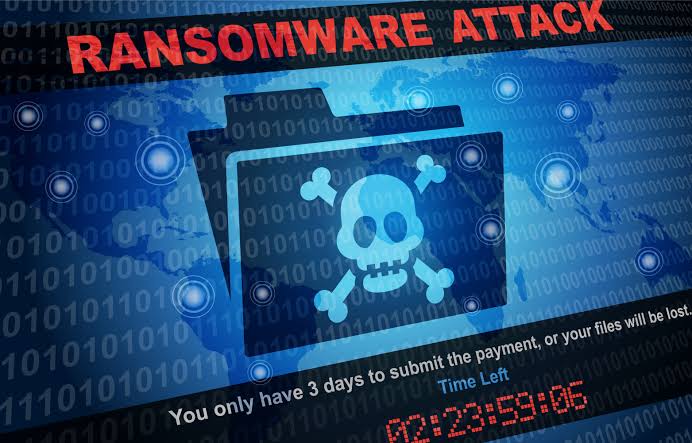In today’s digital landscape, understanding and preventing ransomware attacks has become a top priority for businesses and individuals alike.
Cybercriminals are becoming increasingly sophisticated, targeting organisations of all sizes with malicious software that locks users out of their systems until a ransom is paid.
To stay secure, it’s vital to understand how ransomware works, the damage it can cause, and most importantly, how to prevent it.
What Is Ransomware?
Ransomware is a type of malicious software designed to block access to a computer system or encrypt its data until the victim pays a ransom, often demanded in cryptocurrency. Once infected, users typically receive a message demanding payment to regain access to their files. These attacks can affect individuals, corporations, hospitals, and even governments, causing severe financial and reputational damage.
Common examples include WannaCry, Locky, and Ryuk, all of which have caused global disruptions over the past decade. While some ransomware attacks result from phishing emails, others exploit unpatched software vulnerabilities or weak network defences.
How Ransomware Attacks Work
A ransomware attack typically follows a predictable pattern. First, the attacker identifies vulnerabilities in a target’s system, such as outdated software, unsecured networks, or careless employee practices. Next, they deliver the ransomware payload, often through a phishing email attachment, malicious link, or compromised website.
Once the malware infiltrates the system, it encrypts critical files and displays a ransom note demanding payment, usually in Bitcoin or other cryptocurrencies. Some attackers threaten to leak sensitive data if the ransom isn’t paid, a tactic known as double extortion. Even if payment is made, there’s no guarantee that files will be restored, making prevention far more effective than response.
Common Types of Ransomware
- Crypto Ransomware – Encrypts files and demands payment for the decryption key.
- Locker Ransomware – Locks the entire system, preventing any access until payment is made.
- Scareware – Displays fake warnings about security issues, tricking users into paying for “repairs.”
- Doxware (Leakware) – Threatens to release confidential data unless a ransom is paid.
- Mobile Ransomware – Targets smartphones and tablets, often spreading through malicious apps.
Each type poses a unique threat, but they all share one goal — to extort money by exploiting fear and urgency.
Warning Signs of a Ransomware Infection
- Sudden inability to access files or applications
- Unusual file extensions or encrypted filenames
- Ransom notes appearing on your desktop or folders
- High CPU usage or system slowdowns
- Antivirus or security tools disabled without authorisation
Early detection can prevent full-scale damage, so organisations should train employees to recognise these warning signs immediately.
How to Prevent Ransomware Attacks
1. Regular Backups
Maintain regular, encrypted backups of important data. Store them offline or in secure cloud environments that cannot be easily accessed by malware.
2. Keep Software Updated
Install security patches and updates as soon as they’re available. Many ransomware attacks exploit known vulnerabilities in outdated systems.
3. Use Reliable Security Tools
Deploy reputable antivirus and endpoint protection tools capable of detecting ransomware behaviour. Enable real-time monitoring and firewall protection.
4. Implement Email Security
Since phishing remains the most common entry point, train employees to spot suspicious emails and never click on unknown links or attachments.
5. Limit User Privileges
Restrict administrative access to essential personnel only. This reduces the impact of ransomware if a single account is compromised.
6. Use Multi-Factor Authentication (MFA)
Adding an extra verification layer makes it harder for attackers to gain unauthorised access, even if passwords are stolen.
7. Network Segmentation
Divide your network into secure segments so that if one system is infected, it doesn’t spread across the entire organisation.
8. Educate Employees
Human error is often the weakest link. Conduct regular cybersecurity awareness sessions to ensure staff can identify and respond to threats effectively.
How to Respond If You’re Attacked
If you suspect a ransomware attack, disconnect from the internet immediately to prevent further spread. Do not pay the ransom. Instead, report the incident to law enforcement and engage cybersecurity professionals to assess the breach and attempt data recovery.
If backups are available, restore systems after ensuring the malware has been completely removed. Review your security posture to prevent future attacks.
FAQs on Understanding and Preventing Ransomware Attacks
What is ransomware?
Ransomware is malicious software that encrypts a victim’s files or locks access to their system until a ransom is paid, usually in cryptocurrency.
How do ransomware attacks usually start?
Most ransomware infections begin with phishing emails, malicious downloads, or unpatched software vulnerabilities that attackers exploit to gain access.
Should I pay the ransom to get my files back?
Experts strongly advise against paying the ransom. There’s no guarantee that data will be restored, and payment encourages further attacks.
How can I prevent ransomware attacks at home or work?
Keep software updated, use antivirus protection, back up your data regularly, and train staff to identify phishing emails or suspicious links.
What should I do immediately after a ransomware attack?
Disconnect from the internet, isolate infected systems, report to authorities, and consult cybersecurity professionals before attempting recovery.






